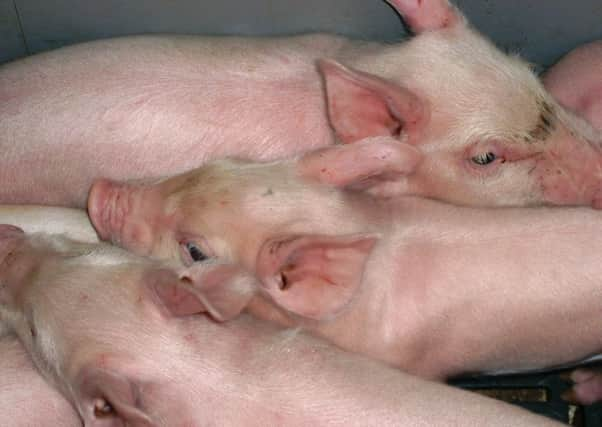DAERA Management Notes: Pigs


2016 was a challenging year with the main challenge, particularly in the first half of the year, low pig prices. With prices hovering just above £1.00 per kilogramme for several months times were tough. However the year did end on a high with prices increasing to over £1.45 per kilogramme. Let’s hope prices continue to increase in 2017 and it is a prosperous year for all involved in the industry.
As a pig farmer what challenges will you face in 2017? Personally I think the two main challenges will be the continued management of large litters and antimicrobial resistance or AMR as it is commonly called.
Advertisement
Hide AdAdvertisement
Hide AdLast year born alive increased by an average of 0.3 pigs per litter. That’s three years in a row that born alive has increased by 0.3 pigs per litter for WinPig users. Average born alive is now 13.8 with the top 25% of units achieving 15.3. The increase in born alive is a credit to you but it does bring its challenges. In 2017 the challenge will be to use whatever techniques/products/equipment that are available to increase piglet survival rates. The use of nurse sows, split suckling, supplementary milk and the management and nutrition of sows during pregnancy and lactation will be even more important in 2017.
The resistance of bacteria to antibiotics is a hot topic of discussion at the moment and is an issue that will affect all farmers in 2017. Targets for antibiotic usage will be set in the spring and will run for ten years from 2018. In 2017 the challenge will be to improve pig health and reduce the use of antibiotics. Areas that will become even more important will be ‘all in all out’, unit hygiene, biosecurity, standard of housing and correct stocking densities.
During 2017 the pig management notes will cover topics that will help you meet both the challenge of managing large litters and improving herd health.
Pig slurry exports
As well as January being the start of a new year it is also the month you have to send your slurry export records to NIEA. Details of slurry exported in 2016 must be sent to NIEA by 31st January 2017. Below are a few reminders of the figures to use to calculate nitrogen (N) production and the information to send to NIEA:
* Quantity of pig slurry exported
* Date slurry exported
* Name and business number of the person who got the slurry
* Name and address of the transporter if used
Advertisement
Hide AdAdvertisement
Hide Ad* N content of pig slurry at 4% dry matter is 3.6 kg per cubic metre
* Annual N production figures:
* Sows and served gilts -16.0 kg
* Maiden gilts - 11.0 kg
* Pigs from weaning to slaughter weight- 2.38 kg
Training courses
During last year 16 biosecurity workshops were held as part of the Farm Family Key Skills programme. The workshops were well attended with almost 300 pig farmers attending with many making simple changes on their unit to improve biosecurity. As highlighted in my last management notes milk spot remains a problem on many units, as does pleurisy, with 9% of pigs having pleurisy. For this reason workshops on respiratory diseases and worm control will be held throughout Northern Ireland between now and the end of March. At these practical workshops you will have the chance to discuss with local vets what you can do on your unit to reduce the incidence of milk spot, pleurisy and other respiratory diseases. Details of when and where the workshops will be held are available on the CAFRE website ( HYPERLINK “http://www.cafre.ac.uk” www.cafre.ac.uk) under Industry Support.